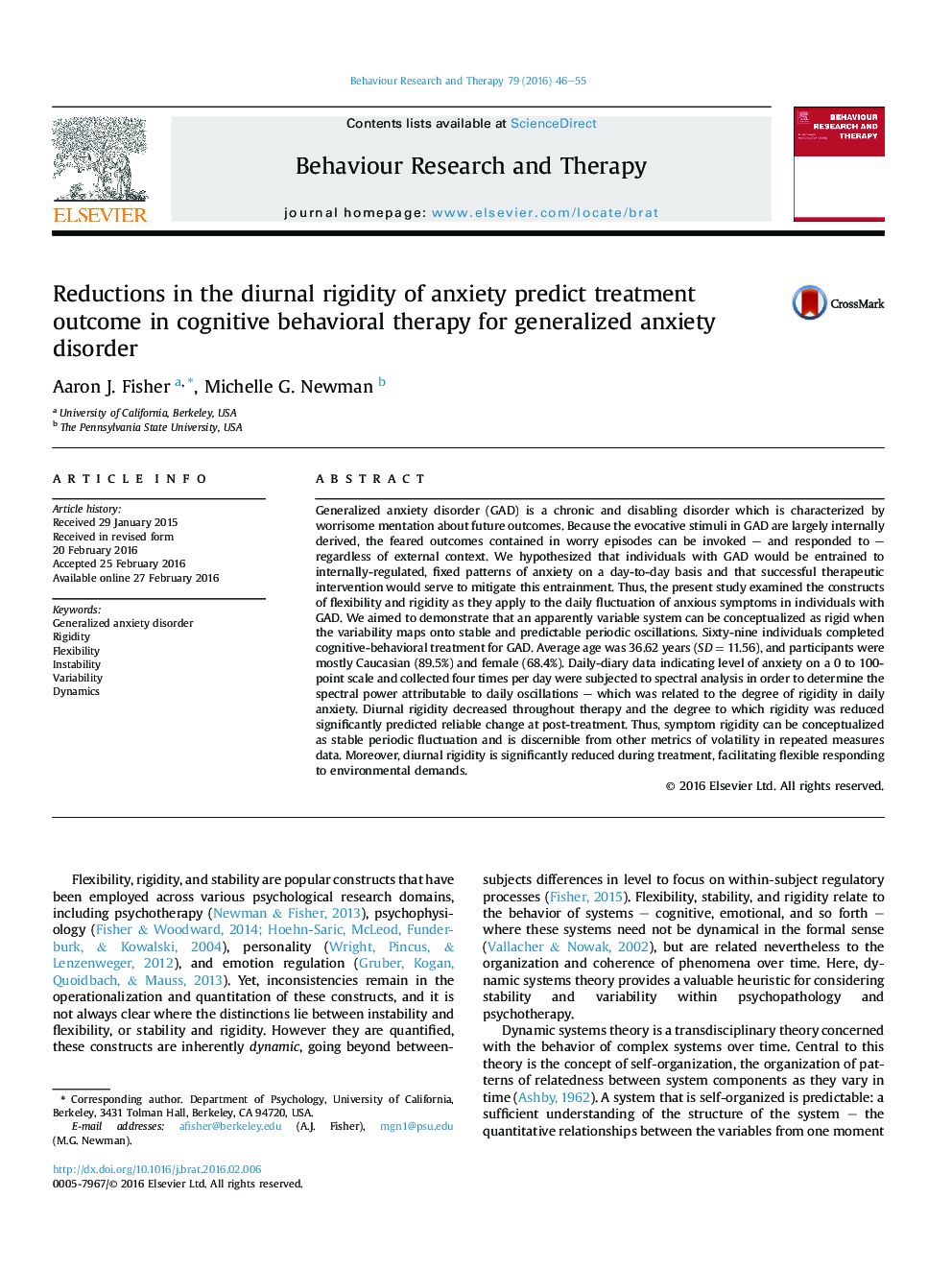| کد مقاله | کد نشریه | سال انتشار | مقاله انگلیسی | نسخه تمام متن |
|---|---|---|---|---|
| 901783 | 1472770 | 2016 | 10 صفحه PDF | دانلود رایگان |
• Stable periodic fluctuation can be considered a reflection of symptom rigidity.
• Spectral analysis can be used to reflect the degree of diurnal rigidity in symptoms.
• Rigidity as reflected by spectral power is not conflated with other measures of variability or volatility.
• Symptom rigidity appears to be elevated in individuals with generalized anxiety disorder.
• Symptom rigidity is reduced during the course of CBT for GAD.
Generalized anxiety disorder (GAD) is a chronic and disabling disorder which is characterized by worrisome mentation about future outcomes. Because the evocative stimuli in GAD are largely internally derived, the feared outcomes contained in worry episodes can be invoked – and responded to – regardless of external context. We hypothesized that individuals with GAD would be entrained to internally-regulated, fixed patterns of anxiety on a day-to-day basis and that successful therapeutic intervention would serve to mitigate this entrainment. Thus, the present study examined the constructs of flexibility and rigidity as they apply to the daily fluctuation of anxious symptoms in individuals with GAD. We aimed to demonstrate that an apparently variable system can be conceptualized as rigid when the variability maps onto stable and predictable periodic oscillations. Sixty-nine individuals completed cognitive-behavioral treatment for GAD. Average age was 36.62 years (SD = 11.56), and participants were mostly Caucasian (89.5%) and female (68.4%). Daily-diary data indicating level of anxiety on a 0 to 100-point scale and collected four times per day were subjected to spectral analysis in order to determine the spectral power attributable to daily oscillations – which was related to the degree of rigidity in daily anxiety. Diurnal rigidity decreased throughout therapy and the degree to which rigidity was reduced significantly predicted reliable change at post-treatment. Thus, symptom rigidity can be conceptualized as stable periodic fluctuation and is discernible from other metrics of volatility in repeated measures data. Moreover, diurnal rigidity is significantly reduced during treatment, facilitating flexible responding to environmental demands.
Journal: Behaviour Research and Therapy - Volume 79, April 2016, Pages 46–55
